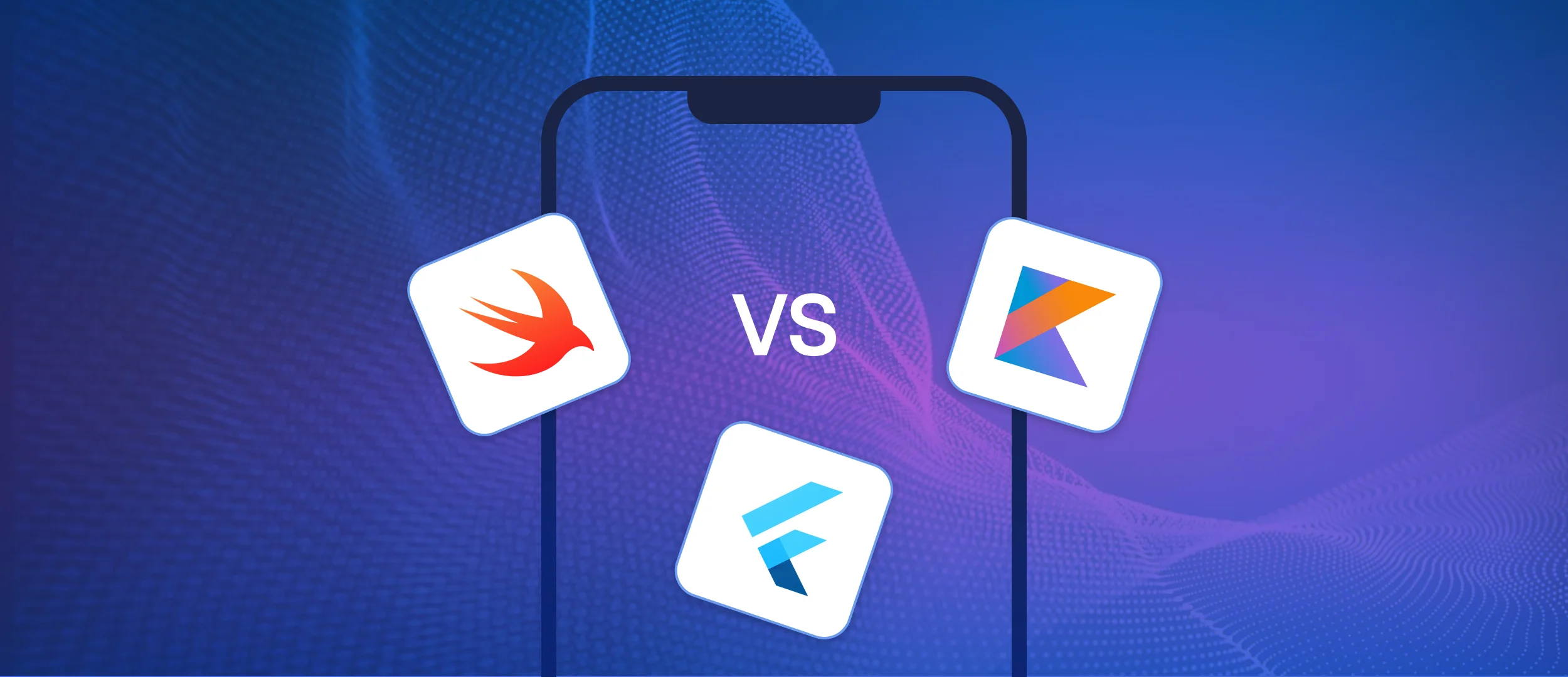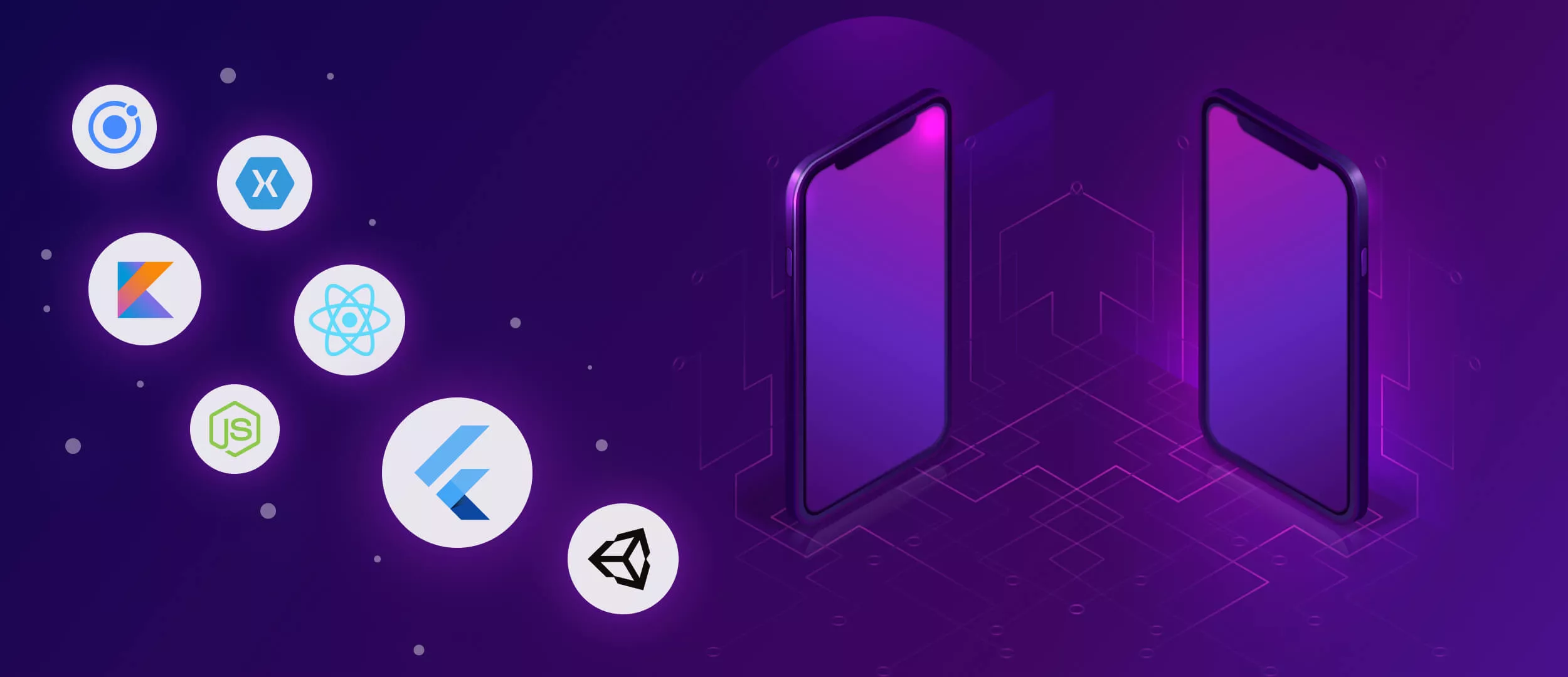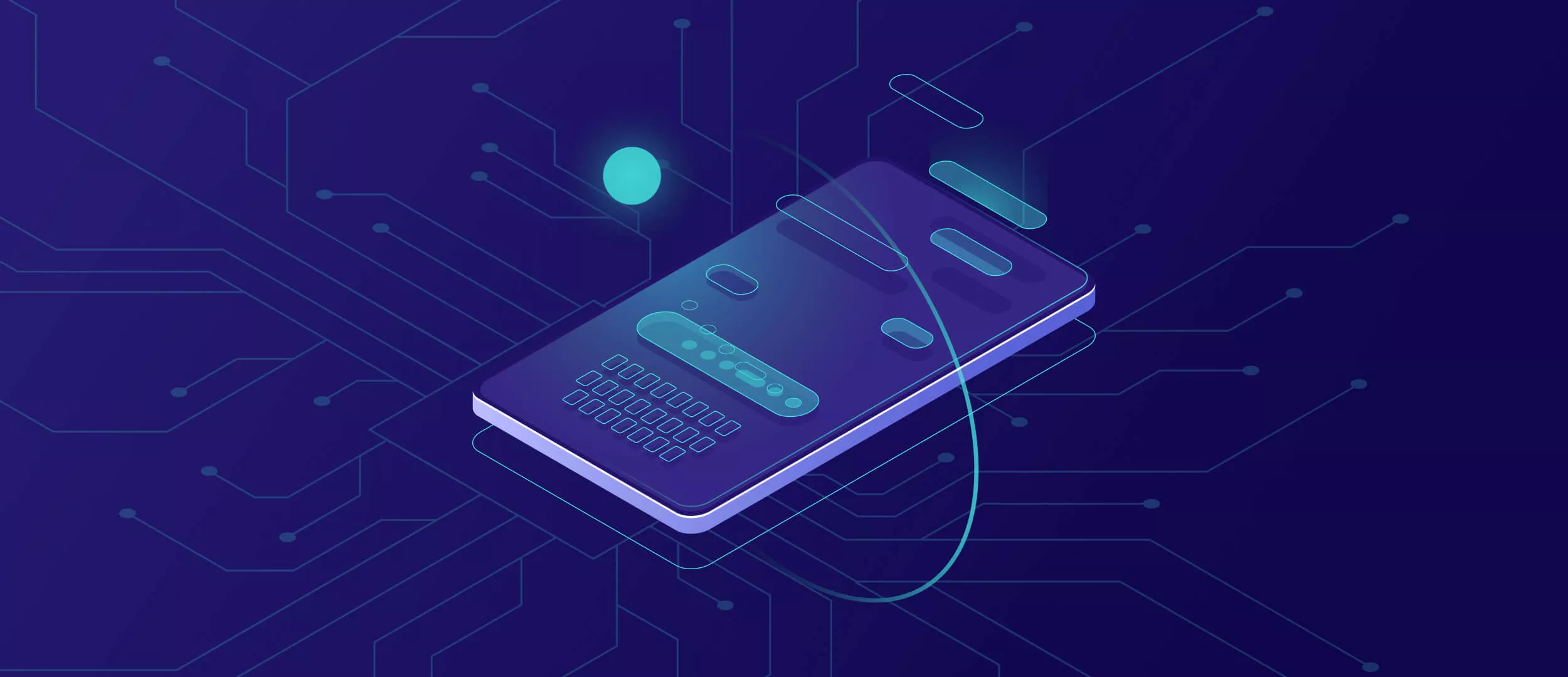
Flutter is a popular cross-platform development framework favored by businesses for mobile app development. But before committing to it, it is wise to ask why Flutter is the best option. It is designed to ease the development process, and Flutter’s software development kit provides an efficient way to create mobile apps. It makes the framework a strong alternative to other options on the market.
With a portfolio of successful Flutter-based app projects, we leveraged our developers' expertise to analyze Flutter pros and cons. By the end of this post, we will help you decide whether this framework is the best choice for your project.
The Stfalcon team has expertise in developing Flutter applications for iOS, Android, and cross-platform use, entirely centered around our clients’ needs. Since 2009, we at Stfalcon have been building apps from scratch and customizing existing ones. We fulfill this through software integrations, modifying functionality, and implementing new features.
What is Flutter?
Flutter is an open-source framework by Google that enables developers to create natively compiled, high-performance apps for various platforms from a single codebase. Flutter stands out from other cross-platform solutions because it uses its own engine to render native-like elements. This approach ensures high stability, even after the updates to the software development kit (SDK). This framework uses the Dart programming language. Dart offers a wide variety of customizable widgets and tools to create native interfaces for both mobile and web applications.
Key Features and Capabilities
Why use Flutter for developing your mobile app? Let’s see some of it’s main capabilities and features:
- Cross platform development. One of the biggest Flutter advantages is this: applications can be built for iOS and Android from a single codebase.
- Fast development. The hot reload feature shows changes instantly without restarting your app. This improves the developer’s productivity.
- Hot Reload. This feature lets developers see the changes they make in the code immediately in the app without waiting for the app to restart. This makes fixing bugs or trying new things much quicker and speeds up development.
- Expressive and flexible UI. Flutter has a layered architecture. It allows you to customize and control every pixel on the screen. Its powerful composability model helps build beautiful UIs.
- Access native features. Flutter provides APIs and widgets to access core platform services like the camera, GPS, storage, and more. This allows building full-featured apps.
- Rich motion APIs. Flutter usage comes with a rich set of APIs to manage animations and gestures, providing a smooth and responsive UX.
- Open source. Flutter is free and open source with a supportive community of developers and contributors.
Want a web app that does more?
Let's build a solution that's smart, sleek, and powerful.
Alina
Client Manager

Business Advantages of Using Flutter
One of the best reasons to use Flutter is that you can build your app for both Android and iOS users without writing separate code for each. This is a big win because it saves time and resources. This unified codebase approach ensures consistency and quality across platforms.
Some benefits of cross-platform development with Flutter are:
- Write once, and run anywhere. Flutter lets you write your app once and run it on various platforms. This means less time coding for different platforms. You save hours that would be spent on writing and testing the same thing for iOS and Android.
- Consistent UX. Flutter's customizable widgets ensure your application retains its look and feel across platforms.
- Code sharing and reuse. One of the biggest Flutter pros is a single codebase that allows substantial code reuse across Android and iOS versions.
- Faster go-to-market. Launch your app simultaneously on both iOS and Android with minimal additional effort.
- Smaller and more agile teams. Reduced codebases allow smaller teams to develop full-featured cross-platform applications.
- Cost-effectiveness. A unified codebase translates into reduced development and maintenance costs as the need for platform-specific teams diminishes.
- Simplified updates. Alterations and enhancements need to be implemented only once. All users can benefit from the latest updates simultaneously.
Here’s a brief answer to why businesses use Flutter for app development: it speeds up the development process. It also helps them create a consistent user experience across different devices, which strengthens their brand identity.
Flutter allows developers to use one framework to create polished and complex apps that work on phones, tablets, and desktops.
What makes Flutter Stand Out in 2025?
Before diving deep into pros and cons of Flutter, let’s see what makes it one of the top frameworks today.
Streamlined Development Process
One reason Flutter is used for app development is its efficiency. With it, you can create one codebase that is compliant with multiple platforms, including Android, iOS, web, and desktop. There's no need to craft platform-specific code. Flutter eliminates the need for separate development teams for different platforms. This reduces coordination efforts and ensures a unified vision throughout the development cycle.
One of the significant Flutter advantages is that the framework lets you quickly view changes made to your code without restarting the entire app. You can add features, tweak UIs, fix bugs, and see the results instantly. This real-time feedback enables iterative development and faster build cycles.
Flutter's reactive widget-based framework makes it fast and easy to build beautiful UIs. Compose layouts by nesting widgets and add effects like scrolling and animation in just a few lines of code. The unified codebase also reduces repetition and maintenance. Developers can access over 25,000 pre-built widgets to accelerate development, cutting development time and cost.
Extensive Customization Options
Flutter's rich library of customizable widgets is a dream for developers who want to create unique user interfaces. These widgets are the building blocks of a Flutter app. They can be layered, combined, and customized to achieve your desired look and feel.
In addition to visual customization, the framework provides powerful control over the functionality of these widgets. This level of control extends to animations and gestures. In the end, it gives users a smooth and intuitive experience. So, for many specialists, this answers the question of why use Flutter for app development.
It also comes with a comprehensive development tool suite that makes the design process more intuitive. These tools help developers create optimized and attractive applications. They include features like integration with popular code editors and performance profiling. The framework has a growing ecosystem of plugins, packages, and widgets built by the community. Developers can find ready-made solutions for any needs or create their customizable widgets.
Google’s Backing and Innovations
As Google developed this framework, Flutter benefits from robust support and constant updates. Google's backing ensures that Flutter is a cutting-edge tool that continually improves and integrates with the latest technologies.
Why choose Flutter for a long-term perspective? Because due to Google’s support, it gets early access to the newest UI and UX components and new design approaches as soon as they are released with new OS versions. Also, Flutter rapidly reflects any platform-specific updates. When there are design or functional changes on iOS or Android, Flutter-based apps can integrate these updates on the same day. This ensures a seamless experience that is in line with native apps. Flutter apps automatically adapt to stay visually and functionally consistent with the latest operating system standards. This means your development team won’t have to spend time updating the app for each platform’s design changes.
Benefits of Flutter App Development
Flutter is increasingly becoming the go-to framework for developers and for any mobile application development services. This is due to its unique features, which streamline app creation across various platforms. Its toolkit provides a rich canvas for developers to craft engaging user experiences while ensuring consistency and speed. There are many compelling reasons why use Flutter for app development. Let’s have a closer look at them.
Seamless Cross-Platform Development
Many developers choose Flutter because it allows them to create mobile apps for both Android and iOS using a single codebase. This means they can develop apps faster without needing to write separate code for each platform. Flutter offers smooth performance that feels like a native app, simplifying the development process significantly. This slashes development time and costs and ensures your app meets high standards across both platforms. In short, Flutter isn't just a framework; it's a productivity boost with seamless performance baked in.
The single codebase approach simplifies both the development process and testing. With just one version of the app to test, you can more quickly identify and fix issues, ensuring a robust final product.
Let’s sum up the advantages of using Flutter for cross-platform development:
- Up to 80% code reuse across Android and iOS versions
- The same business logic shared across platforms
- Uniform UI design system and widget toolkit
- Write once, run on billions of iOS and Android devices.
Consistent UI Across Different Platforms
Flutter is in demand among brands as it ensures that your app's user interface remains consistent across various platforms. It comes with a rich set of pixel-perfect and customizable widgets, enabling the creation of a responsive and attractive UI. This uniformity is crucial for brand identity and user experience. It provides users with a familiar interface, regardless of the device they use.
The graphics engine of the framework directly creates the widgets, skipping the native platform entirely. This means you should not worry about UI consistency across different versions of Android or iOS.
Hot Reload Feature for Rapid Iteration
One of the reasons to use Flutter is its hot reload feature, which helps developers work faster by instantly updating changes. Its benefits include:
- Seeing changes in seconds without restarting your app
- Tweaking styles, adding features, and fixing bugs faster
- Allocating more time to perfecting app logic and UX
- Accelerating the development process.
This rapid iteration boosts developer productivity and enables better collaboration between developers and designers. It aligns closely with agile development practices. It supports continuous feedback and adjustments throughout the app development process.
Leading cross-platform features
Flutter addresses many of the challenges developers and businesses face when creating apps for multiple platforms.
- Single codebase. A single codebase approach allows programmers to write and deploy code to both iOS and Android platforms. It saves development time and effort and ensures a faster time to market for new apps.
- Rich widget library. It provides a comprehensive collection of pre-designed widgets. Developers can customize them to create complex UIs that look and feel great on both Android and iOS. This rich widget library speeds up the development process and helps maintain visual consistency across platforms.
- High performance. Apps built with Flutter are compiled with native ARM code and aim for performance that is indistinguishable from native apps. Flutter's high performance results from the Skia Graphics Engine usage. UI can be redrawn each time with every frame, ensuring smooth animations and transitions.
- Hot reload. This feature is a favorite among developers, as it allows them to see the changes they make in the code almost instantly.
- Strong community and support. The framework is supported by a strong community of developers who contribute to its growth and offer support. There's a wealth of resources available. Documentation to forums and third-party tutorials makes it easier to learn and solve problems.
- Versatility. Flutter is not only for mobile apps. It's also being developed to run on the web and desktop. Thus, it is a versatile framework for developers who want to reach the widest possible audience with their applications.
Potential Limitations and When Not to Use Flutter
While benefits are clear, how about why not use Flutter? Like any technology, the framework has some limitations and may not always be the best choice. Here are five reasons that can make you reconsider using Flutter.
Flutter Downsides
- Large application size. Flutter solutions tend to be larger than native apps. This is because it includes a Dart runtime and the Flutter engine within the app, which increases the minimum size.
- Limited third-party libraries. Although Flutter's ecosystem is growing, it still may have fewer third-party libraries as more mature platforms like iOS (Swift/Objective-C) or Android (Java/Kotlin).
- Performance overheads. For most use cases, Flutter's performance is on par with native apps. For apps that need a lot of CPU power, like high-end games or complex calculations, native development can be more effective.
- Platform conventions. This Framework allows you to create a highly customized UI. Yet, one of Flutter's drawbacks is that adhering to platform-specific conventions (iOS Human Interface Guidelines or Material Design on Android) can require more effort if you aim for a native look and feel.
- Talent pool. Flutter apps are written in Dart, which is less widely used than languages like Kotlin or Swift. Developers who can write in Dart are generally more expensive and harder to find.
When Flutter Doesn’t Fit
Though there are a lot of reasons to use Flutter for app development, it may just be a poor choice for certain types of apps.
- Highly customized platform-specific apps. If your app relies heavily on platform-specific features or needs to look and behave exactly like a native app, it might be easier to use the platform's native SDK.
- 3D games or intensive graphics apps. If your app needs advanced 3D graphics or game features, consider using a framework like Unity or Unreal Engine. However, note that Flutter is good for 2D games.
- Ultra-high performance requirements. For apps with critical performance, native development might provide the edge in speed you need. These apps can be real-time financial trading apps or high-frequency signal processing.
- Existing large codebases. Integrating Flutter into an existing large native codebase can be challenging. It may not bring significant benefits compared to continuing with native development.
- Background app work. Though you can technically execute Dart code in the background, Flutter is a poor choice for apps that require extensive background work. It often requires additional plugins or native code, making development with the Flutter framework unproductive and the app’s effective performance impossible.
- Highly sensitive data. Using shared code across different platforms makes it harder to keep data secure and meet compliance standards. This can lead to potential vulnerabilities. For industries like healthcare and banking, using native development is usually a safer option. This approach helps them meet strict security and regulatory requirements.
Flutter in Action: Industry Use Cases
Google Pay
This may be one of the most remarkable and successful Flutter use cases. As Google Pay extended its reach to new markets and gained millions of new users, it relied on 1.7 million lines of code between its Android and iOS apps. The company faced challenges here: it needed to hire more developers and continue building each new feature twice for both platforms.
So, instead, Google invested in the Flutter framework, which enabled fast and efficient scaling worldwide. Despite the challenges of investing big engineering resources at the primary stages and migrating into Flutter with an active app, the launch was a huge success. A new codebase was 35% smaller, an app was more efficient to manage, and updating it became easier. After switching to Flutter, Google Pay requires 70% less engineering effort.
BingeBooks
BingeBooks helps book lovers find new titles. It recommends books, gives detailed information about each one, shares reviews, and shows where to buy them.
Stfalcon developed Android and iOS apps for BingeBooks, using the Flutter framework for a quicker and more cost-efficient development process. Flutter allowed us to create two apps at the same time. This cut down on development and support costs and made it quicker to implement changes.
When choosing the project architecture, we decided to use the BLoC pattern in conjunction with the Clean Architecture approach. The solution is easy to maintain and test, and new developers will understand the logic of its work with minimal effort. The client team already developed the backend part for the web version, but we only needed to integrate it into the app using Dio.
Users can easily access a library of books through a user-friendly app. The app includes the essential features they are familiar with from the web version of the service.
eBay Motors
eBay Motors is a part of eBay that focuses on vehicles, car parts, and accessories. The app for this project needed to have all the features eBay users expect, such as searching, messaging, and auctions. The company leaders also wanted it to be completed within a year.
To meet a tight deadline, the team looked for cross-platform solutions and decided to use a new Google framework called Flutter. By December 2019, eBay Motors was available on both iOS and Android. This approach kept the expected platform features while providing a unique experience for the eBay Motors brand.
FAQ
Which is better, Flutter or React Native?
Both frameworks have their advantages and disadvantages. The choice between them depends mainly on the type of app you are building and your specific needs. To get a detailed comparison of Flutter and React Native, you can read our article on this topic, where we get into all the details.
Is Flutter good for web development?
As a cross-platform framework, Flutter is good for web development as well, though it has some limitations. Flutter is your choice if you need to launch a working web app quickly. But if SEO is vital for you, it is better to choose a different approach, as search engines struggle with indexing and ranking Flutter apps.
Will Google stop supporting Flutter?
The perspective of Google abandoning Flutter, one of the most successful cross-platform development frameworks, looks most unlikely. Such assumptions mainly refer to Google laying off part of the Flutter team after the main development process was over. Still, as of the end of 2024, Flutter has reached version 3.24 and continues to receive regular updates and improvements. To sum up, if you are concerned about whether Flutter is good for the future, it doesn’t look like Google will abandon the framework any time soon.
Final Word
Flutter has proven itself to be more than a passing fad. It is an open-source tool for building apps that work on different platforms. It allows developers to create attractive apps that run smoothly, all from a single codebase. The advantages of using Flutter are clear, but it's vital to consider the advantages and drawbacks of any framework or platform.
That's where an experienced development company like Stfalcon can help. We create strong iOS apps that include features like Touch ID or Face ID for security, Apple Pay for payments, and machine learning technologies. For Android, we build apps that connect with third-party services, sync in real-time, track GPS location, and more. Our cross-platform applications have high capacity and can be run across multiple platforms.
With Stfalcon, you get more than a development team. You gain partners who are committed to excellence. We build apps that don’t just work across platforms; they excel. We focus on delivering performance, scalability, and a great user experience every time.
If you’re looking to turn your app idea into a reality with Flutter, Stfalcon is the partner you need. Get in touch with us, and let’s create something great together.

 Read the full case study
Read the full case study


